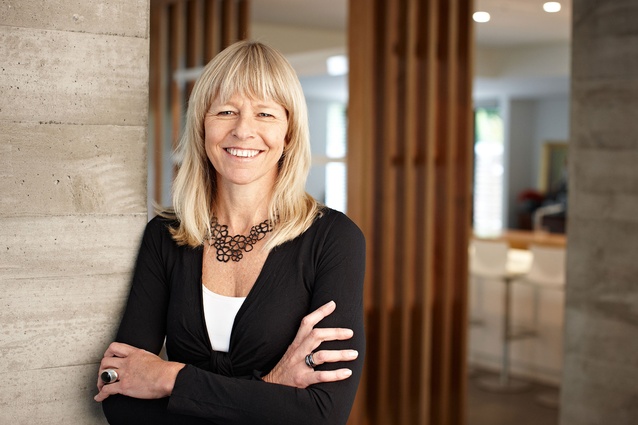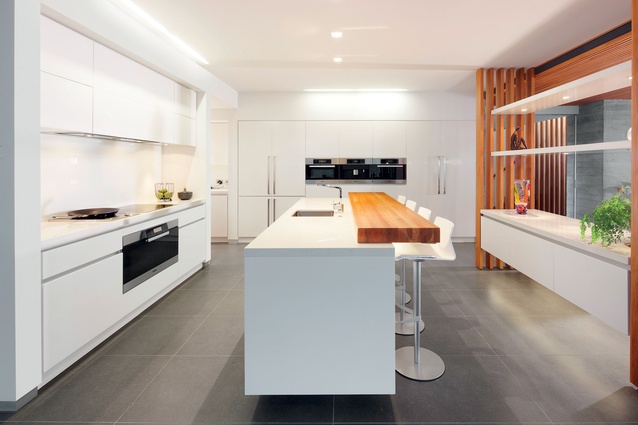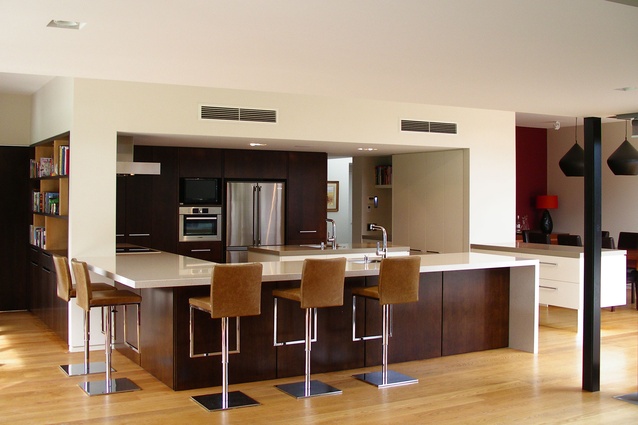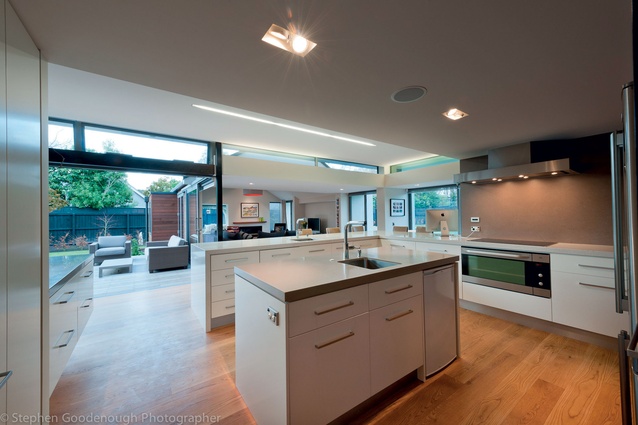Kitchen maid
Ingrid Geldof has created more than 2000 kitchens and bathrooms and won 32 design awards in the process. The Christchurch-based designer’s inspired by an eclectic mix of furniture, architecture and technology; her rooms are simplistic, functional and stylish. Urbis spoke to Geldof about her career and the practicalities of the modern kitchen.
Urbis: How did you get into kitchen design?
Ingrid Geldof: After leaving school, I worked for a hotel chain before attending the first interior design course available at the Christchurch Polytechnic, which my father had helped develop. I started in 1989, the year after he retired, and the following year I completed the advanced course. My experience provided me with the essential knowledge I needed to own my own business, but I didn’t quite have the confidence at that stage. So I started working for a joinery manufacturer as a kitchen and bathroom designer and an appliance specialist.
U: What drew you to that part of interior design?
IG: I have a natural ability to understand the technical aspects of design. Because kitchens are more technical in nature than interior design is, the industry appealed. I like to know how things work and how they fit together, which is a fundamental part of kitchen design. Kitchens are functioning, operating spaces. There is an ergonomic aspect to their design. As a kitchen designer, I am able to explore the most efficient ways of making spaces easier to operate in.
U: How did your career develop?
IG: I first worked for Kitchen Design Centre, which didn’t last more than a couple of years. We were all made redundant in 1992 so I set up my own business. That year I won a Home Ideas Centre Award and I started to attract publicity. I started to become known for good, practical design.
U: What inspires you?
IG: International architecture is always an inspiration. I visited Barcelona recently and had a look at Gaudi’s work. It opens your mind to a broader picture you can’t get from staying in one place. I’m inspired by furniture design too, particularly pieces from the 1950s and 1960s. I also make an effort to get to fairs and trade shows regularly, focusing on technological advances, which broadens the scope of what we can do with materials. I wouldn’t class myself as a designer who makes a statement with design, rather one who provides highly functional, balanced and simply beautiful work. My parents are Dutch so they were efficient in many ways; my mother was very orderly and everything had its place in the home. I look at the practical areas of a home and improve the way it operates for the people using it. I’m ambidextrous and can see spaces in a different way. I can see what would be possible, past what’s there, which is something many of our clients find challenging.
U: Where is New Zealand kitchen design heading?
IG: When I first got involved in the industry, there was one other kitchen designer in Christchurch and maybe a handful in Auckland. Now the National Kitchen and Bathroom Association New Zealand has about 300 members, 60 per cent of whom are independent designers. I became president of the association last year and as an organisation we are working to raise the design and business standards of our members, ensuring they produce quality work at their own levels in the market. I believe we are leading the way in many aspects of kitchen and bathroom design, but the next 10 years will be a challenging growth period with the rebuild in Christchurch.
U: What makes a good kitchen?
IG: An efficient space. Everything has to work well. The traditional kitchen work triangle – the space between the sink, fridge and stove – is no longer a golden triangle. It is more of a golden star because now, as well as the three key components, you also often have a microwave, wall oven, more than one sink and a dishwasher, not to mention the walk-in pantry or scullery. All those elements still need to be within a certain distance – as a general rule, four to five metres – to make it functional. You can make it very easy to work in a kitchen if you place things well. Workspace is fundamental in the kitchen too. About three metres is the optimal length for a bench, not including the hobs or cooktop. Often it’s the little things that make a kitchen work overall. Where do the keys, handbag and mail go? If there isn’t somewhere easy to put them, they are all dumped on the kitchen table or bench. Our lives are busy and cluttered enough; if there is a right place for everything, things will be put there. If you can design a kitchen in this way, it works.
U: Any tips for creating a functional kitchen space?
IG: Keep the elements of the golden star within a small, workable area. That’s key. Kitchens also need to be designed for those who will be using them. If it is a young couple or family, that needs to be taken into account, just as if it is for an older couple, it needs to be designed to suit their needs. The height of storage is often important for young families, as is avoiding any potential hazards such as a bench overhang. For an older person, it may be most important not to bend down unnecessarily over a low workspace.
U: What effect is the rebuild of Christchurch having on your work?
IG: We are doing a lot of rebuild work. Because there are so many people involved in the whole process, everything takes a lot longer than it would do normally. Essentially you have to first look at what was there prior and then redesign it. Some home-owners want to upgrade certain things. There is a lot of extra time taken working out the difference between what it would have cost to simply replace what was there, and the cost to upgrade some elements. It’s an interesting time because I am getting many of the clients back for whom I did kitchens in the past, as well as new clients. The challenge will be satisfying all of their time frames.
U: How would you describe your own kitchen?
IG: It was designed to go into my original 1960s’ home. It is compact, but very efficient and easy to work in. It’s not a completely traditional-style kitchen but it is a bit retro. It features dark, stained joinery and funky mosaic tiles. My favourite appliances are the induction cooktop and Miele combination oven.













